Profiling and emulating IoT battery chemistries
Profiling and emulating IoT battery chemistries
A case study
In our previous blog post, we explored the practical techniques for IoT battery selection. One such powerful technique is battery profiling and battery emulating. In this blog post we walk you through a case study where we conducted profiling of two distinct battery chemistries from multiple brands. The batteries were profiled for a LoRaWAN device power profile at room temperature, using an accelerated battery profile developed in consultation with the battery manufacturers.
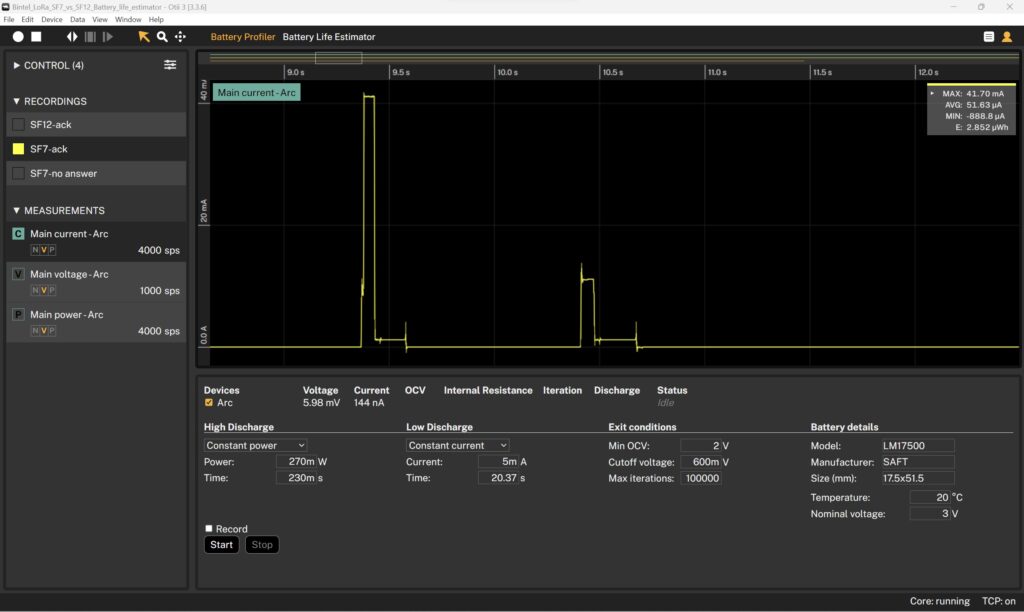
Brands and battery samples profiled
We profiled multiple samples from six brands, including different form factors and chemical compositions. This allowed us to assess how these factors impacted the battery performance. Since the profiling was done at room temperature, we did not anticipate unexpected elements from environmental variables. However, future profiling in varying environments could provide additional insights into the battery’s capacity in different conditions.
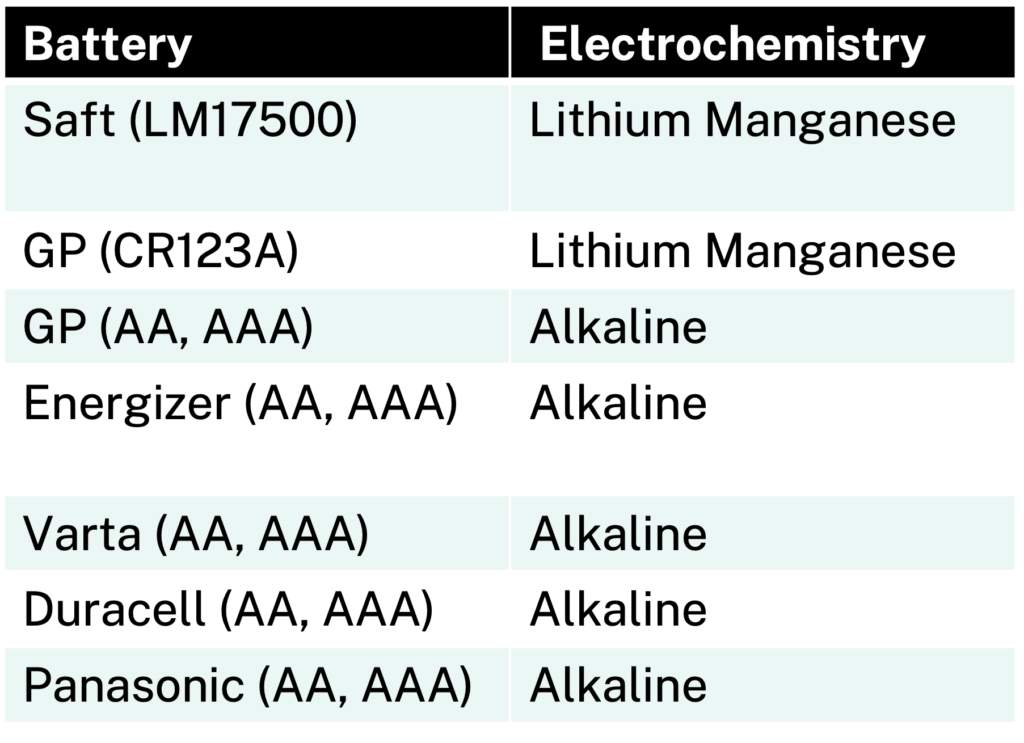
We examined 3V lithium manganese batteries like the LM17500 from Saft, as well as other options such as the CR123A from GP. We also analyzed 5V alkaline batteries in AA and AAA sizes from multiple manufacturers.
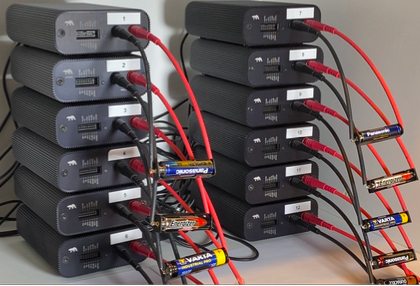
Battery profiles of alkaline batteries
The battery discharge curves are presented in the graphs below. They are plotted against voltage during the active TX/RX phase of the device, with emphasis on the cut-off voltage lines. The cut-off for 3V cells is set at 2V, while for 1.5V cells connected in series, the cut-off is 1V per cell.
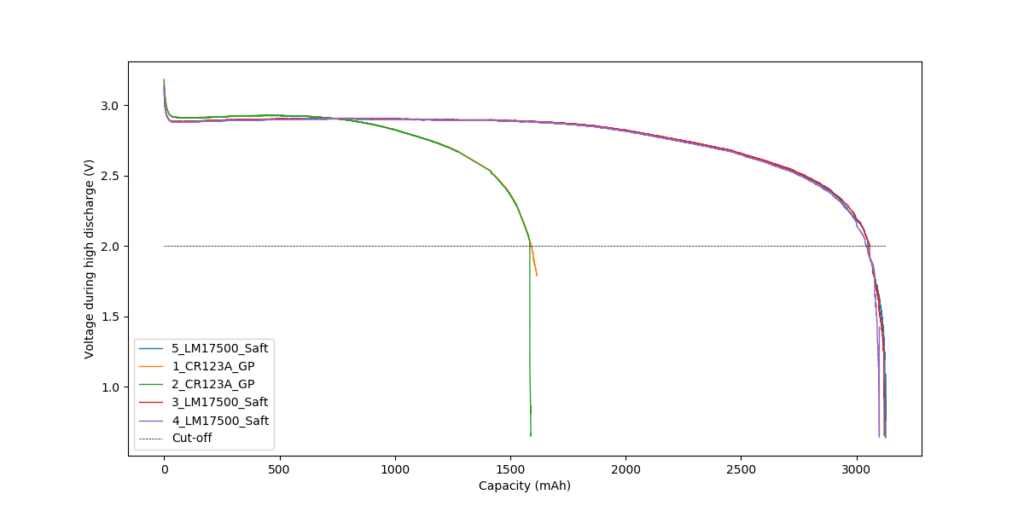
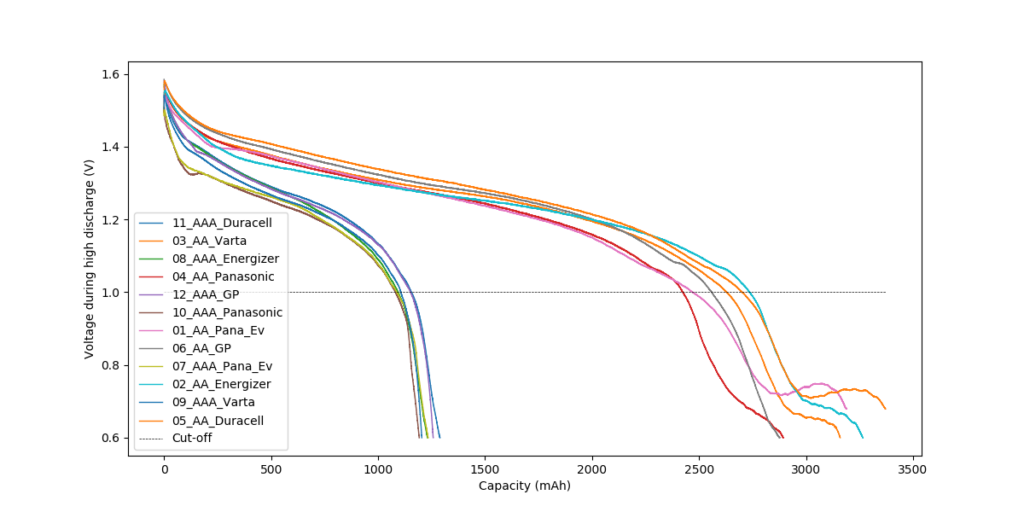
Battery profiles graphed for alkaline batteries (AA and AAA) from five differentbrands.
The profiling results revealed interesting findings:
- For the LM17500 battery, three samples were profiled, with an average capacity before cut-off of approximately 3050 mAh, slightly higher than the data sheet capacity.
- Two CR123A batteries were profiled, demonstrating an average capacity of around 1600 mAh, in agreement with the data sheet for that specific temperature.
Interesting, alkaline batteries exhibited significant variations in available capacity based on the manufacturer, which is an important factor to consider for customers responsible for battery replacement.
- AAA batteries had a range of 1080 to 1150 mAh, with an average of around 1100 mAh, slightly lower than the data sheet capacity of 1200 mAh.
- AA batteries showed a broader capacity spread from 2420 to 2730 mAh, with an average of approximately 2590 mAh. For example, Varta’s data sheet showed a capacity of 2950 mAh.
The importance of battery profiles
Accurately measuring battery profiles provides a tailored and realistic understanding of a battery’s capacity for a specific application, surpassing the information provided solely by data sheets.
By directly applying the profiled battery discharge to the device instead of using a standard power supply, the actual usable capacity can be determined and the estimation accuracy can be refined. It is important to note that the actual usable capacity may be as low as 20% of the measured capacity, depending on the device’s behavior.
Tools like Otii Ace Pro and Otii Battery Toolbox can emulate these battery profiles, effectively acting as profiled batteries for IoT devices. By adjusting the used capacity in the battery emulator within these instruments, and monitoring the device’s shutdown or reboot, the true and realistic usable capacity can be uncovered. This ensures a more precise assessment of the battery’s potential in the specific application context.
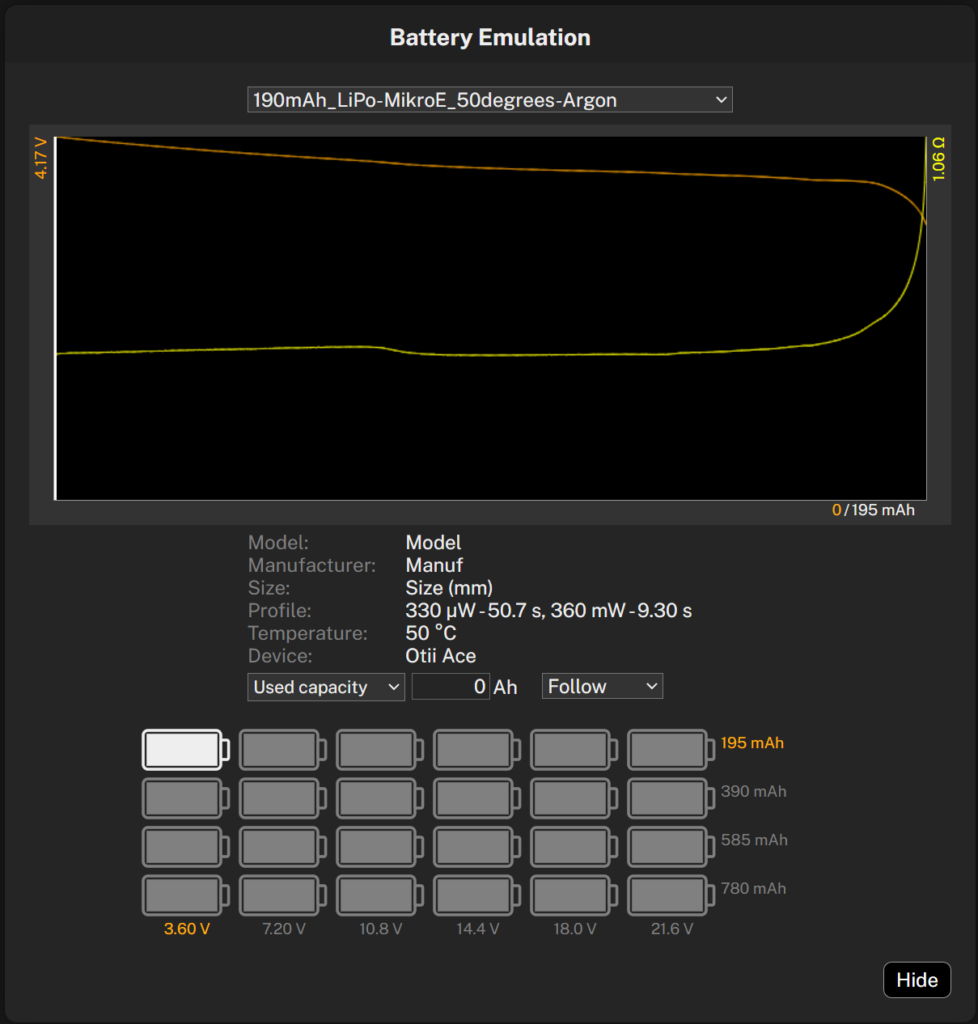
The profiling process allowed us to observe the nuances in battery performance across different brands, chemistries, and form factors. These insights are crucial for making informed decisions tailored to the specific needs of the device and use case, considering parameters beyond just data sheet capacities. For a more robust and resilient IoT device design, future profiling in diverse environmental conditions, especially varying temperatures, can provide further depth to our understanding.
Conclusion
We propose a technique for selecting the ideal battery: initial selection based on a defined use case, power profiling of the IoT device to understand its requirements, and a refined battery selection using device power behavior to assess the battery’s real-world performance for the specific use case and device. This nuanced approach enables developers to make well-informed decisions that boost battery life.
How to pick the right battery for your IoT device
- First pick based on battery data sheet
- Power profile the IoT device (know the use case and application)
- Profile batteries for the specific IoT device/application power profile
- Emulate batteries to get the usable battery capacity
- Iterate 2-3 throughout product development project
Blog series exploration
This is the last article in this blog series. For more insights, download our white paper Powering IoT devices now.

Blog series content
- Exploring challenges and strategies for long LPWAN battery life performance
- Optimizing battery life of LPWAN IoT devices
- Choosing the right battery for IoT devices
- Four steps for a successful IoT battery selection
- Profiling different battery chemistries: A case study
Become a member of our community
Gain access to exclusive resources, educational materials, and expert advice to enhance your knowledge and understanding of powering IoT devices and battery testing.